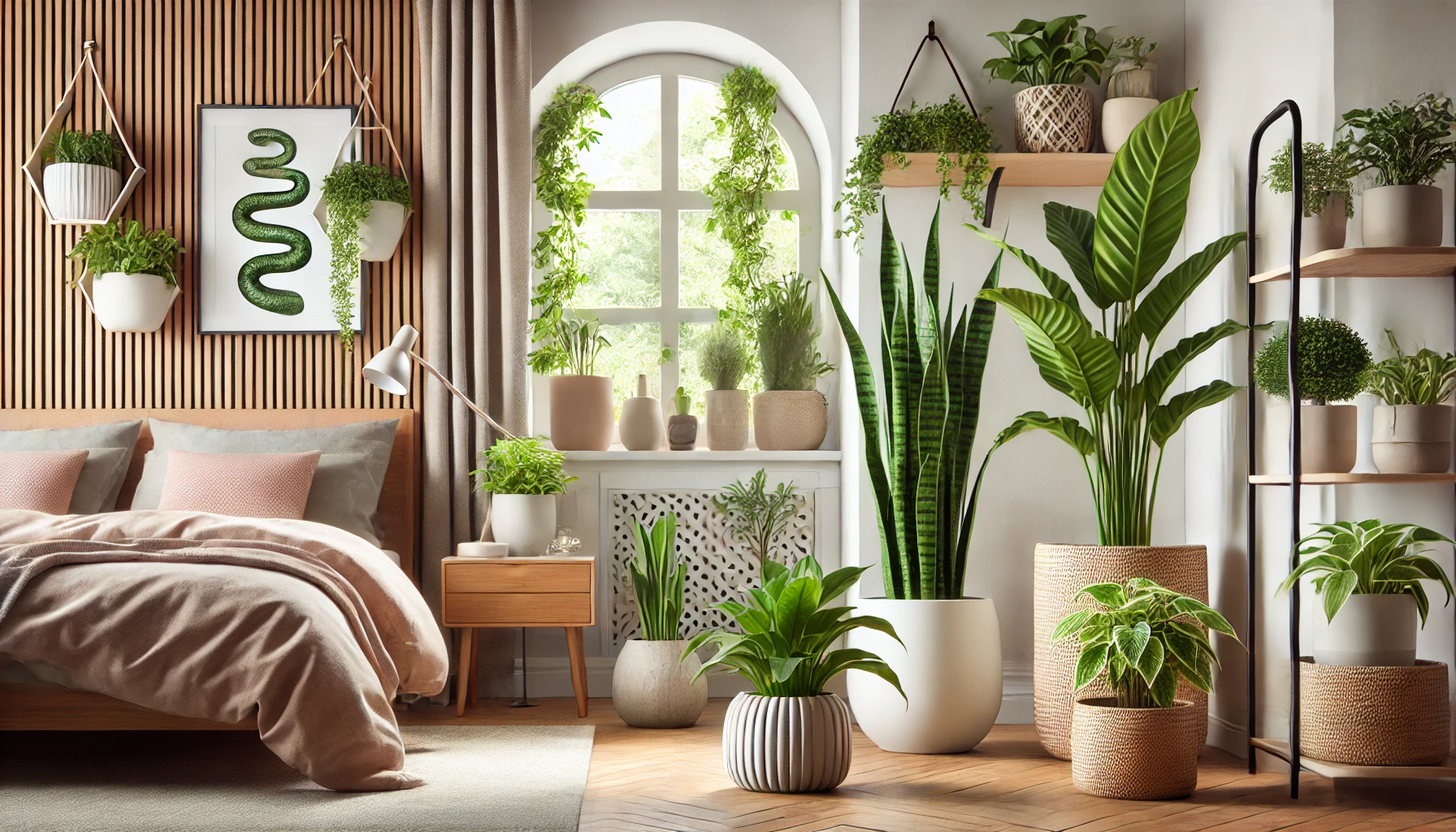Indoor plants not only beautify your home but also have the power to improve air quality by filtering harmful toxins. Air-purifying plants are an excellent addition to any space, offering both aesthetic and health benefits. In this guide, we’ll explore the best air-purifying plants and provide tips on how to care for them.
Benefits of Air-Purifying Plants
Indoor air can contain pollutants from cleaning products, furniture, and even everyday activities. Air-purifying plants help by:
- Removing toxins: Certain plants absorb harmful chemicals like benzene, formaldehyde, and carbon monoxide.
- Increasing oxygen levels: They release oxygen, promoting a healthier environment.
- Reducing stress: Plants contribute to a calming atmosphere, improving mental well-being.
Top Air-Purifying Plants
1. Snake Plant (Sansevieria trifasciata)
The Snake Plant, also known as “Mother-in-Law’s Tongue,” is a hardy plant that releases oxygen at night, making it ideal for bedrooms. It’s effective at filtering toxins like formaldehyde and benzene.
Care Tips:
- Light: Thrives in low to bright, indirect light.
- Water: Allow the soil to dry out between waterings.
- Maintenance: Minimal care; perfect for beginners.
2. Peace Lily (Spathiphyllum)
The Peace Lily is known for its elegant white blooms and ability to remove pollutants such as ammonia and trichloroethylene.
Care Tips:
- Light: Prefers low to medium, indirect light.
- Water: Keep the soil consistently moist but not soggy.
- Maintenance: Wipe the leaves regularly to prevent dust buildup.
3. Boston Fern (Nephrolepis exaltata)
Boston Ferns are natural humidifiers and excellent at removing toxins like xylene and formaldehyde. They’re perfect for adding a lush, tropical vibe to your home.
Care Tips:
- Light: Bright, indirect light.
- Water: Keep the soil moist and mist regularly to maintain humidity.
- Maintenance: Trim any brown fronds to encourage healthy growth.
4. Spider Plant (Chlorophytum comosum)
Spider Plants are easy to care for and highly effective at removing carbon monoxide and other toxins. They’re also pet-friendly.
Care Tips:
- Light: Bright, indirect light.
- Water: Water when the topsoil feels dry.
- Maintenance: Propagate by planting the “spiderettes” (baby plants).
5. Areca Palm (Dypsis lutescens)
The Areca Palm, also known as the butterfly palm, is a natural air humidifier and toxin remover. Its lush, feathery fronds make it a decorative favorite.
Care Tips:
- Light: Bright, indirect light.
- Water: Keep the soil evenly moist, but avoid waterlogging.
- Maintenance: Wipe leaves to remove dust and ensure proper photosynthesis.
6. Aloe Vera (Aloe barbadensis miller)
Aloe Vera is not only a natural air purifier but also a medicinal plant. It filters benzene and formaldehyde while providing soothing gel for skin irritations.
Care Tips:
- Light: Prefers bright, indirect sunlight.
- Water: Water deeply but infrequently; let the soil dry completely between waterings.
- Maintenance: Minimal care; thrives in well-draining soil.
How to Care for Air-Purifying Plants
Light
Place plants in spots that align with their light requirements. Bright, indirect light is ideal for most air-purifying plants, but some can adapt to low-light conditions.
Watering
Overwatering is a common mistake. Check the soil’s moisture level before watering, and ensure pots have drainage holes to prevent waterlogging.
Humidity
Many air-purifying plants, like ferns, thrive in humid environments. Use a humidifier, mist plants regularly, or group them together to create a microclimate.
Fertilizing
Feed plants with a balanced, liquid fertilizer during the growing season (spring and summer). Avoid over-fertilizing, as it can harm the roots.
Cleaning
Dust can block light absorption and reduce photosynthesis. Clean the leaves gently with a damp cloth every few weeks.
Arranging Air-Purifying Plants in Your Home
- Bedroom: Place a Snake Plant or Aloe Vera to improve air quality while you sleep.
- Living Room: Use larger plants like Areca Palm or Peace Lily to enhance the ambiance.
- Bathroom: Boston Ferns and Spider Plants thrive in humid conditions.
- Office: Add a compact plant like a Spider Plant to your desk for a refreshing touch.
Conclusion
Air-purifying plants are a natural and effective way to improve your home’s environment. By choosing the right plants and providing proper care, you can enjoy cleaner air, a healthier atmosphere, and a beautifully green space. Whether you’re a seasoned plant parent or just starting, these plants are perfect additions to any home.
